Comparative: How to choose your Aikidogi (Kimono)
The different Seido models
Choosing a Dogi is not a simple task, especially if you are a beginner. Light-, standard-, heavy-weight, traditional cut, modern cut, original cut: There are many models and choosing the one that best suits you does not only depend on the thickness of the fabric! Here we will discuss the different Seido models, fully representative of all the existing "Made in Japan" Aikidogi. However, low-end Dogi made outside of Japan are not to be part of the topic.

Seido Heavy-Weight Aikidogi Ultra Soft WA800
Let us start with an important point. In this comparison we will mainly use the word "Aikidogi". "Gi" in Japanese means "clothing", while "Kimono" is the traditional Japanese garment often worn for ceremonies. The term "Aikido Kimono" has been improperly used in the west for decades and it is now difficult to correct this error. It is also possible to use the term "Keikogi" (meaning work/practice clothes) Dogi (clothing of the way) or Aikidogi (clothing of Aikido), but not "Aikido Kimono" which does not make sense in Japanese.
Indeed, who would wear a traditional silk Kimono for martial art's practice?! (This said, let's be honest: O'Sensei did! But that is another story.) In short, from now on "Aikido Kimono" => "Aikidogi" ! (Yes, it's also spelled Aikido Gi, but we'll stick with Aikidogi)
§ Some background on Aikidogi
The Aikidogi was created and its present form defined in the 60s by a famous Japanese brand still active today, originally specialized in Judo equipment. The Aikidogi was created following consultation with the teachers of the Hombu Dojo at that time. However, we should keep in mind the technical limitations and the needs of the practitioners back then.
The result was the "traditional" cut that can still be found under several brands, including Seido, actually very close to the Judogi cut.
For decades this cut has not changed even though the needs and the morphology of the practitioners did. Meanwhile, other models were created by different companies, often with little background to work with, based on a very limited number of opinions and no real expertise. Aikido is a non competitive sport and there is no sponsorship system. The manufacturing of Aikido equipment does not interest many people and there is no large-scale study on the body type or the needs of the practitioners.
Today, Seido is trying to make a difference, by collecting opinions from various existing groups, but the problems remain largely the same. The manufacturing of Aikido equipment does not enjoy the same means as that of Judo, Karate or other competitive disciplines.

Former Aikidogi/Judogi, fully hand-woven: Why does this not exist anymore in Japan?
§ What type (weight) for my practice?
There are broadly three types of Aikidogi:
- The models called "light-weight" or "ultra-light-weight" for hot regions or traveling. The Japanese summer with temperatures up to 40°C and a humidity of 90%, a lack of air-conditioning in most Dojos, one can easily understand the success of these models here. They are also popular among practitioners who go to seminars often. Light because of the reduced thickness of the fabric, they also absorb less sweat and are therefore also lighter to carry after practice.
Further, they dry quickly. However, often criticized is the lack of solidity. This is true to a certain degree, but the Japanese fabrics are of excellent quality as is the type of weaving, especially designed to make the fabric as resistant as possible given its finesse.
- The models called "standard" or "classic" are usually made of "rice grain weaving" (Sashiko) fabric, single layer (Hitoe) with a "diamond weaving" (Hishisashi) fabric on the lower part. Its general appearance is almost identical to that of a Judogi (Judo Kimono). Neither especially light nor heavy, these models are very versatile and therefore often recommended for beginners and actually worn by the vast majority of the Japanese practitioners. The KS100 model was designed with a tighter sashiko grain for a lighter weight and more fabric flexibility but is still considered as a "Standard" sashiko type model, despite its light weight.
- The "heavyweight" or "super-heavyweight" models are also made of "rice grain weaving" (Sashiko) fabric and a "diamond weaving" (Hishisashi) fabric on the lower part, but double-layered (Futae), (which is the reason for its heavy weight), and with a cut very close to that of the Judogi of top brands like Mizuno or KuSakura.
These heavy-weight models are often called "Senshuyo" (competitor) or "Shihanyo" (for Shihan, teachers). Naming them competitor" does not really make sense in Aikido, but the "Shihan" models are often extremely thick and heavy, with a vertical back-seam (rather unpleasant for Ukemi).

Light Weight Aikidogi Seido KS200 (Aiki)
By the way, it is a running joke among practitioners to say: "Shihanyo! - for those who do not practice Ukemi anymore!".
Rarely favored in Japan, these models are still popular with western practitioners. This is probably due to the fact that before the arrival of the "Made in Japan" Aikidogi on the international market, everyone wore heavy and thick Judogi and many practitioners still wear them today.
Why choose a light- or semi- over a heavy-weight model?
For the Aikido practice, or at least in our opinion, it is desirable to at least have the possibility to let your trainings partner strongly grasp your Dogi in order to perform a correct technique. The Judogi on the other hand are not only thick and stiff but also rough, especially designed to make seizures as difficult as possible during competitions.
However, note that the WA800 Extra-Soft Aikidogi (Double Layer) is treated with a biomass flow-through solution that makes the Dogi ultra soft and very pleasant to the touch. The lightweight models are considered for the practice during summer, warm areas and for practitioners who travel a lot and need to carry 2 or 3 jackets in their suitcase.
§ Concerning the cut
Two major elements have to be considered. The first: the length of the jacket and sleeves, and the second: the width of the jacket (and further the vertical back seam):
As indicated in the short historical summery at the beginning of the article, the so called "traditional" cut is based on the Judogi cut and thus very wide and with sleeves covering the wrists but with a relatively short jacket.
The AS200, WA300 and WA600 models are based on this cut, respecting the tradition, but from our point of view it is not what is best and most adapted for Aikido. Our team is still trying to figure out what a "real" Aikidogi designed especially for Aikidoka could and should be like.
The Aikidogi labeled "New Aikido Cut" are models with shortened sleeves, lengthened jacket and whenever possible without back seam. This goes for the AS250 (identical to the AS200 fabric), Aiki (super lightweight) models. These Dogi are generally for rather skinny practitioners.. The KS100 is also with short sleeves and long jacket, but with a back seam to fit a wider range of practionners, as an entry model.
The second point concerns therefore the width of the jacket and in particular the presence or absence of a vertical back seam. What you should know however, is that the back seam also has its advantages. It allows a straighter cut (not necessarily thinner), they generally fit better and adapt more easily to all body types.
On the other hand we do not recommend it for double-layer models regarding the discomfort during falls. Thus, the double-layer "semi-heavy" has no back seam. This is also the case for AS250 models single layer, and the lightweight Aiki KS200 model.
To eliminate the "puffed" effect on the trunk , we tried various combinations of modifications. The Aiki and the AS250 models therefore have a thinner cut (slim cut) than all the other models. The backseam on the KS100 doesn't pose any specific issue due to the softness and slimness of the fabric.
To summarize: In Aikido we generally need shorter sleeves, a longer jacket that stays in the Hakama and especially a jacket not too wide. Judoka are on average 10 kg heavier than their ideal weight, but this is not the case for most Aikidoka who may consider their "traditional cut" jacket as too large. All of this, of course, is in the end a matter of personal taste.
§ Concerning the pants
In Aikido, the choice of the pants also needs to be discussed. Indeed, because of the Suwariwaza (kneeling) practice and the falls, the pants "suffer" much more than in most other martial arts. We therefore recommend pants that have not only reinforced knee patch but are doubled from thighs to ankles, ensuring maximum durability on all sensitive parts of the pants. That said, it is difficult to achieve "super light" pants.
In the Seido catalog, the pants that are offered with the models AS200, AS250, WA300, WA600 and WA800 are classic, 100% cotton, reinforced from thighs to ankles. The pants of the KS100 model being designed to be as light as possible is not doubled from thights to ankles.
Although the pants of the Aiki model are made based on the same principle regarding the reinforcement, we are using the same fabric as that for the jacket. The pants are still relatively heavy but dry faster.

Classic Aikido Pants - Biotech AS200
§ Comparison of the different Seido models
Click on the name of the model to directly get to the product description on SeidoShop.
| Model | Material/Weight | Durability | Drying | Cut | Pricing |
|---|---|---|---|---|---|
|
Light-Weight Single Layer Aikidogi KS100 |
100% Coton Standard weight |
** | *** |
New Aikido Cut With back seam |
¥12,500 |
|
Aikidogi "Aiki" KS200 |
100% Coton Light-Weight |
** | **** |
New Aikido Cut No back seam |
¥20,500 |
|
Aikidogi Polyester/Cotton KS300 |
70% Coton / 30% Polyester Light-Weight |
*** | **** | New Aikido Cut No back seam |
¥17,500 |
|
Deluxe Single Layer Aikidogi AS200 |
100% Coton Standard weight |
*** | *** |
Traditional cut With back seam |
¥18,700 |
|
Deluxe Single Layer Aikidogi "Slim Cut" AS250 |
100% Coton Standard weight |
*** | *** |
New Aikido Cut No back seam |
¥19,200 |
|
Classic Double Layer Aikidogi WA300 |
100% Coton Heavy-weight |
**** | ** |
Traditional cut No back seam |
¥22,300 |
|
Deluxe Double Layer Aikidogi WA600 |
100% Coton Extra heavy weight, double sewing |
***** | * |
Traditional cut with back seam |
¥28,000 |
How to choose your size
The choice of your size depends on two factors.Your size (height) but also your body type, and your weight in general.
If you are at or under your ideal weight (e.g. less than 70 kg : 180 cm) you may consider taking a half-size smaller than what is indicated on the size chart.
If you are around or above your ideal weight, (e.g. more than 90 kg : 180 cm) it is the opposite, you might opt for a half-size bigger.
It is true that the cotton models shrink, but this is taken into account in the recommended sizes on the size chart. However, the detailed measurements (digits) are the measurements of the workshop output (shrinkage not included). The shrinkage is indicated for every product on the "product details".
Detailed size charts with the measurements (digits) of the workshop output are available for every product on the "product details" of SeidoShop.com

Detailed measurements for Seido Aikidogi.
Concerning the pricing
Prices vary according to three factors. The cost of the fabric, the cost of labor and the size (which is related to the other two factors), not to mention the exchange rate YEN/EURO. Japan is a developed country, therefore the cost of labor is relatively high. Moreover, Japan's geographical limitation makes the cotton expensive.
In return, the quality of the equipment is unique, thanks to a decades-old expertise of the workshops and a long history of cotton production in the Aichi region.
However, buying a "Japanese" product, truly and a 100% "Made in Japan" is a consumer choice. As a Aikido practitioner, sensitized to a certain ethical standard, you may ask yourself the question: "How/who and what are the conditions under which I want my equipment to be manufactured of?"

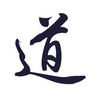
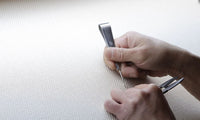
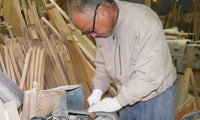
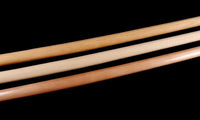
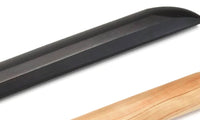
5 comments - Comparative: How to choose your Aikidogi (Kimono)
Are there any specific differences for women when buying, in terms of sizing or cord placement in particular?
In reply to dinogirl.
Hi,
Thank you very much for your comment.
No, not really. Women have a slightly different body shapes, but it’s more a matter of height/weight ratio.
As far as you get your measurements right, you’ll find a suitable model for you.
The cord placement is standardized at a place that is suitable for women. We can move it on request of course.
Best
Hi,
Somebody at the dojo ponted out to me that a “proper” Aikido gi should have a split in the back and not sideways ,“judo style”, is this correct or are we just talking about an “older” style then ? …just wondering !
In reply to Hugh GEERAERTS.
Hi,
Thank you very much for your comment.
Split (back-seam) is not the point here.
As explained in the article, the fact a dogi is seamed on the back or not will influence the overall cut, mainly due to limitations in the total width of the fabric roll itself.
You will find Aikidogi, Judogi, even Kendogi with back-seam, and you will also find version without the back-seam.
It depends if the cut is designed to be narrow or large, straight front or deep front, etc. The point is to have a cut adapted to the practitioner body shape, which is nearly impossible with a single style of sewing. And you will find all those cuts in our catalog.
What’s true is that the first Aikidogi ever made had a back-seam. But that’s only because it wasn’t Aikidogi, it was Judogi (the first maker was a Judo equipment specialist that turned to Aikido by only making very small modifications to its products).
That excepted, no one ever created any specific rules/guidelines for Aikidogi, so… and Aikidogi is what an Aikidoists consider an Aikidogi, by usage.
That’s what makes our brand actually, collaborative design with many Aikidoists, from beginners to the highest ranked teachers
What about for those who are above their ideal weight, those who are plus size and still looking to train?